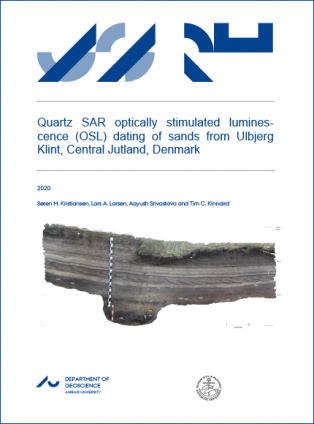Quartz SAR optically stimulated lumines-cence (OSL) dating of sands from Ulbjerg Klint, Central Jutland, Denmark
Synopsis
This report concerns optically stimulated luminescence (OSL) investigations of a soil profile at Ulbjerg Klint, Central Jutland, Denmark. At this site, a minor landslide had exposed some unusually clear plough marks, which might contribute to the understanding of the first use of the mould-board plough in southern Scandinavia. The aims were first to date the plough marks, and secondly to date the oldest phase of the sedimentary archive of this site, with a remarkable thick sequence of aeolian sands with high potentiale for archaeological and paleo-climate studies. The report presents the OSL method, the results, a discussion and a conclusion, while the appendixes contains analytical description and a detailed soil profile and sampling description. Combined, the determined OSL ages reveal that over a 2500 years period the vegetation on this exposed coastal cliff was removed several times with episodes of drifting sand as a consequence. The first aeolian sand layer is dated at or slightly after 5th century BCE, i.e. around the transition between the Danish late Bronze Age to the pre-Roman Iron Age. The aeolian sand layer with the clear plough marks is from the 17th century CE, i.e. in the Little Ice Age. Due to the limited number of OSL dated samples, no additional climatic or land use indications could be established.

